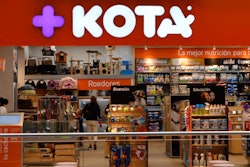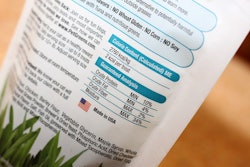
Who keeps pet food marketing honest? Ultimately, it is the responsibility of the company making the claims and advertising to ensure that it is truthful and not false and/or misleading. As we know from the example with Petco, that doesn’t always happen or at the very least is often poorly executed. Not only has the retailer’s campaign to “ban artificial ingredients” been misleading and incomplete, they are also still keeping pet foods and treats that have artificial and possibly unsafe ingredients, such as caramel color with sulfites. As a result, Petco has tried to remedy the false and misleading claims with the now infamous asterisk.
In this environment, what are your options to ensure accountability in pet food marketing? Most people would think it would be the Federal Trade Commission. Unfortunately, given their bandwidth and the topics they cover, pet food is not high on their list.
After doing some inquiring, I was referred instead to the National Advertising Division (NAD). NAD monitors national advertising in all media, enforcing high standards of truth and accuracy. Additionally, it is part of the Better Business Bureau (BBB). When I reached out to NAD, I was put in touch with Laura Brett (director) and Annie Ugurlayan (assistant director) to discuss how to file a complaint. Ugurlayan sent me the following:
My boss, Laura Brett, forwarded your email to me. I wanted to provide more information on how to file a challenge. There is a fee to file a challenge and the amount to be paid depends on whether you are a National Partner with the Council of Better Business Bureaus or not (the CBBB administers our program). A National Partner who has been a partner for less than a year must pay US$17,500 and those who are partners for one year or more pay $15,000. Non-national partners with annual revenues of less than US$1 billion pay US$20,000 and those with revenues of US$1 billion or more pay US$25,000. You can file for a hardship waiver to reduce or waive the filing fee pursuant to Section 2.2(A)(4) of our Procedures.
Pay to play
Yes, you read that correctly. To keep pet food companies “honest,” you must pay to play. Since I am a single individual who is considered a “non-national partner” with annual revenues of less than US$1 billion, I would have to pay US$20,000 to file a complaint. This would also include small startup pet food companies and small independent stores as well.
So, the group that is designed to protect consumers (or small companies) and prevent false and misleading advertising asks for US$15-$25K to look out for misleading advertisements. NAD is there for only the 800-pound gorillas to battle it out. As a result, companies making audacious and misleading claims will not have any retribution unless they upset another 800-pound gorilla.
If no one is looking out for the consumer or small companies, what you end up with is regulation by proxy (veterinary schools, Dr. Google and fearmongers). This ultimately results in biased issues or summaries since our industry does not have a real consumer advocacy group with no hidden agendas. Now, enter the Pet Nutrition Alliance.
Random questionnaire from a random organization
Since the middle of 2018, I have received numerous questions from friends and colleagues asking me about an organization named the Pet Nutrition Alliance (PNA) after they received a call, email or letter from the group asking them to answer a series of detailed questions. The questions centered around pet food manufacturing, who is involved in the formulation (i.e., training and degree), percentage of manufacturing outsourced and a random question on a random product for a particular nutrient.
For those of you who took my advice and did not answer the questions or declined, congratulations: You were among the 78% that did not play the game. Before I explain why I am congratulating you, let us first dive into what PNA is and is not.
PNA is an organization that provides “custom” tools and resources for veterinary healthcare teams with a focus on nutrition being essential to optimal pet health. When you click on the About PNA link on its website, you are taken to a page telling about their vision, mission and the organizations that have been working and partnering with PNA to develop the resources and tools for veterinarians. Additionally, they provide information about the executive board, board members and PNA Educational Tools Committee. Sounds like a great online resource, right? Well, it depends.
Corporate sponsors and conflicts of interest? Yup!
What you will not see on the "About PNA" page is the corporate sponsors. You need to go back to old announcements and press releases to identify them. For example, on May 15, 2012, the Journal of American Veterinary Medical Association published a news release stating the corporate sponsors for PNA as Hill’s Pet Nutrition, Nestle Purina and P&G Petcare. Somehow, they failed to list these corporate sponsors on their “about” page. Or did they? I’m not sure … I didn’t see an asterisk!
If you take a second look at the "About PNA" page, you will notice that all the people represent a particular organization or, in the case of the PNA Educational Tools Committee, they have no organizational affiliation listed (even though they may belong to them). If you take the time to look up the background (via LinkedIn) of each person serving on the committee, you will quickly find that 31% of the people are currently working for or have worked for Hill’s Pet Nutrition, Royal Canin or Nestle Purina. Interesting, right? Especially from a group pontificating about transparency in the pet food industry. Hold on, it gets better!
More conflicts of interest? Say it ain’t so!
Additionally, if you know the pet food industry and the potential conflicts of interest with corporate donors and universities, then the water becomes even murkier (even with the board members representing organizations), especially when the universities name their buildings or feeding/nutrition centers after the donor company.
When you look at the additional members of the association tied to veterinary schools (notice the universities are not named on the PNA site either), with further investigative work you will see that Hill’s Pet Nutrition and Nestle Purina are the primary donors for the following schools: Tufts Cummings School of Veterinary Medicine, University of Minnesota College of Veterinary Medicine, University of Tennessee College of Veterinary Medicine (UT) University of Missouri College of Veterinary Medicine and University of Saskatchewan Western College of Veterinary Medicine (WCVM).
When you take this into account, 77% of the PNA Educational Tools Committee have potential conflicts of interest with three major pet food companies (predominantly Hill’s Pet Nutrition and Nestle Purina). Now, if you overlay the funding and grants that these schools receive for research, scholarships and awards … well, you can make your own conclusion. Did I forget to mention that one of the committee members was a Hill's Fellow in Clinical Nutrition?
What makes it even funnier is if you look up the Nestle Purina Nutrition Center at UT and the Nestle Purina Feeding Center at WCVM, the veterinarians are showcasing the Purina veterinary products with smiles (click on links above). That is on top of the “sponsored” feeding programs from Hill’s Pet Nutrition, Nestle Purina and Royal Canin at the veterinary schools (i.e., the products are discounted for students). We all know that I am not always politically correct but even I know not to talk badly about a donor if they built my feeding/nutrition center.
Having sponsors and donors is legitimate and helps offset or defer costs. Not being transparent about those sponsors and donors makes people question everything.
Back to the questionnaire and its fatal flaws
The goal of the questionnaire that was sent to pet food companies last year was to build a manufacturer database. So, what did the 22% that did respond actually tell us? If you go to PNA’s manufacturer report, it doesn’t tell you much of anything.
I will use Hill’s Pet Nutrition as an example. They answered that they are 96% internal manufacturing and 4% co-manufactured. They employ full-time American College of Veterinary Nutritionists (ACVN) diplomates and full-time nutritionists with Ph.D. and M.S. degrees in animal nutrition. Also, Hill’s was able to answer a random question about the random product and that product’s nutrient level. By the way, it was only limited to one of eight nutrients (arginine, calcium, sodium, copper, zinc, vitamin D, thiamine or choline).
Let us now pick apart the answers. As an industry, we know that co-manufacturers are just as good as company-owned manufacturing plants. It all comes down to food safety culture, standard operating procedures and execution of the procedures. If you do not believe that philosophy, then you were duped by marketing (sorry) or Dr. Google (i.e., self-proclaimed experts).
The second question pertains to employing full-time ACVN diplomates and credentialed people being involved in formulating. Do they actually formulate foods? Do they touch every formulation before it goes to production? Do they use Concept 5 (or other formulation software)? Better yet, have they ever logged onto Concept 5 or have the Concept 5 icon on their computer? Are they simply a figurehead in the R&D group? Better yet, who runs the R&D group?
Does the ultimate person responsible (the Grand Poobah for the R&D group and for formula development/release) have a veterinary or nutrition degree? If not, wouldn’t you like to know? I certainly can’t tell based on how the question is framed or answered. I bet if the questions were asked in this format, many us would be surprised at how the industry has changed over the last five to 10 years.
Also, what does answering a single question about a single product and single nutrient have to do with AAFCO compliance? Nothing. Did they even verify that the information they received was accurate via analysis? Not likely. If they asked and I answered 1.5% arginine without looking at any foods, I win!
The final flaw of PNA
If PNA members are trying to be the “experts” in pet food nutrition, then they should have taken a page from the World Small Animal Veterinary Association (WSAVA). For example, on the latter organization’s recommendations for selecting pet foods, question 5 asks, “What specific quality control measures do you use to assure the consistency and quality of your ingredients and the end product?”
Does the consumer or the everyday veterinarian really care about who formulates the food vs. how it is executed at the plant, makes it to the shelf safely and is safe for animal consumption? Also, WSAVA asks for a complete analysis for a random food. Not just one nutrient!
Unfortunately, PNA provides a false sense of security for both consumers and veterinarians. If I was a veterinarian or consumer and took PNA’s manufacturer report at face value, I would likely narrow down my selection of “good” companies to less than 22% of the more than 200 companies that were sent the survey. Does that mean that 78% of the companies produce an inferior product? The short answer is no! If you need an example to prove the point, we only need to look back to the recent worldwide recall by Hill's Pet Nutrition resulting in animal deaths and multiple class-action lawsuits. I guess they were not asked about vitamin D in a canned product. (Too soon?)
Oh yeah, Hill’s Pet Nutrition was one of the 22% responding companies. I guess if you sponsor the organization, you need to play along. Don’t worry, Nestle Purina and Royal Canin answered the questions as well!
Lastly, when you name your campaign “Dare to Ask … About Your Pet’s Food,” you should be brave enough to ask the questions that really matter, regardless of how your sponsors will answer. More importantly, ask questions that will help consumers and veterinarians understand!
Got topics?
If there are topics you would like to have discussed, feel free to comment below or reach out via LinkedIn: www.linkedin.com/in/ryanyamka.

















